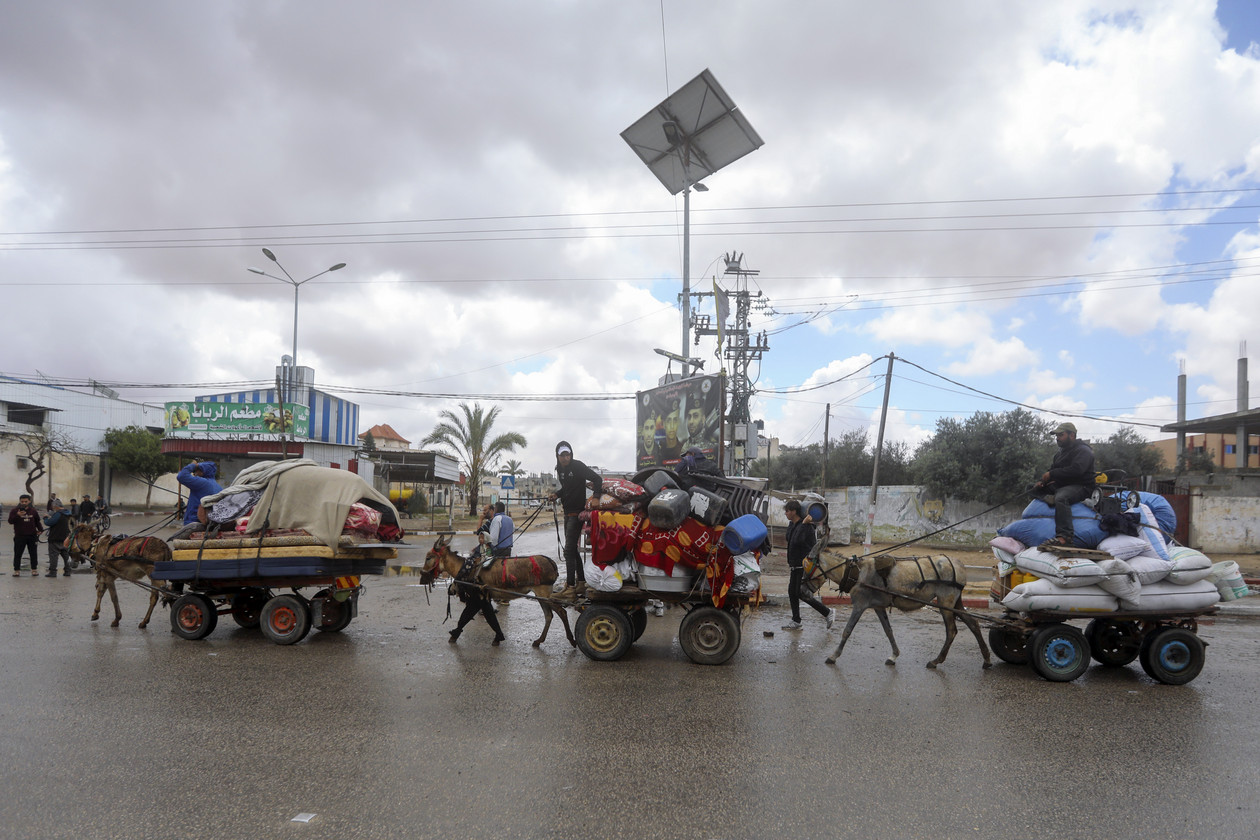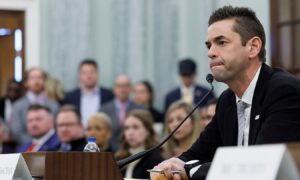It is unclear whether an agreement has been signed to end the seven-month conflict in Gaza, as Hamas declared Monday that it had accepted an Egyptian-Qatari cease-fire proposal but Israel stated it was examining the offer.
There was a ray of hope that a peace agreement may end the carnage. Israel had earlier warned that an attack was about to happen in the southern Gaza town of Rafah by ordering some 100,000 Palestinians to start leaving the area. About half of Gaza’s population—1.4 million people—are taking refuge in Rafah, and the United States and other important Israeli allies are against an attack on the city.
Even though it was still unknown whether the declaration by Hamas will prevent the assault, Palestinians in Rafah burst into celebrations after it.
Israeli military spokesman Rear Adm. Daniel Hagari stated, “We examine every answer and reply very seriously” in response to Hamas’s argument. Nonetheless, he did say that Israeli military operations would go on as usual for the time being. According to an Israeli expert, Israel did not suggest the framework that Hamas approved.
According to a National Security Council spokesperson who spoke on condition of anonymity to discuss the call before an official White House statement was released, President Joe Biden spoke with Prime Minister Benjamin Netanyahu and reiterated U.S. concerns about an invasion of Rafah. The spokesperson added that a cease-fire would be the best way to protect the lives of Israeli hostages.
Matthew Miller, a spokesperson for the United States State Department, stated that American authorities were examining the reaction from Hamas “and discussing it with our partners in the region.” The United States is reportedly investigating whether or not Hamas accepted the terms agreed upon by Israel and international negotiators, according to a senior American official.
No information about the idea has been made public. While on a regional tour last week, U.S. Secretary of State Antony Blinken urged Hamas to accept the arrangement, which, according to Egyptian authorities, called for a multi-stage ceasefire beginning with the restricted release of hostages and partial withdrawal of Israeli troops from Gaza. They further claimed that a “permanent calm” would be reached between the two parties, resulting in the complete release of all hostages and a larger Israeli pullout from the area.
Egyptian officials said that in exchange for the release of all of Hamas’s hostages, the group had been demanding stronger assurances that Israel would completely withdraw from the conflict. Whether or whether any adjustments were made was immediately unclear.
After Hamas’ attack on Israel on October 7th sparked the conflict, Israeli authorities including Netanyahu vehemently rejected the compromise and vowed to continue their fight until Hamas’ destruction.
According to Israel, Rafah is the final major stronghold of Hamas in Gaza. On Monday, Netanyahu stated that the assault on the town was crucial in preventing the militants from reestablishing their military capabilities.
The United States, however, is strongly opposed to him. In response to Israel’s evacuation order, Miller stated that the United States has not yet seen a workable and credible strategy to safeguard Palestinian civilians. The current plan for an operation in Rafah is not feasible, he stated.
There is widespread concern over the impending procedure. Israeli forces have already killed 34,000 people and wreaked havoc on the land, and humanitarian organizations fear that an offensive may result in much more civilian casualties. Additionally, it has the potential to derail the Rafah-based humanitarian supply operation, which is reportedly keeping Palestinians across the Gaza Strip alive.
According to U.N. High Commissioner for Human Rights Volker Türk, the evacuation order was deemed “inhumane” on Monday.
The Gasans are still suffering from bombings, diseases, and starvation. The news that they must move again came today, he added. “It will put them in much more risk and make their lives worse.
The Israeli military distributed leaflets in Rafah’s eastern neighborhoods requesting that residents leave because an attack was on the horizon and because remaining “puts themselves and their family members in danger.” Repetition of the message was done through text messaging and radio broadcasts.
A temporary coastal settlement known as Muwasi was ordered by the military as a humanitarian zone by Israel. Tents, food, water, and field hospitals were reportedly added to the zone as Israel increased its size.
Whether or whether such was already established was unclear, though.
Approximately 450,000 Palestinians who have been displaced are currently seeking refuge in Muwasi. They have been receiving aid from the United Nations Relief and Works Agency (UNRWA), which is known as the Palestinian Agency. However, families in this mostly rural region dig their own latrines because there are so few public restrooms and sanitary services.
After months of living in overcrowded conditions in tent camps or schools, Palestinians in Rafah were left to grapple with the prospect of uprooting their family once again for an uncertain future when the evacuation order was issued.
Mohammed Jindiyah claimed that he fled to Rafah after an initial attempt to remain in his northern Gazan home under intense airstrikes at the start of the war.









